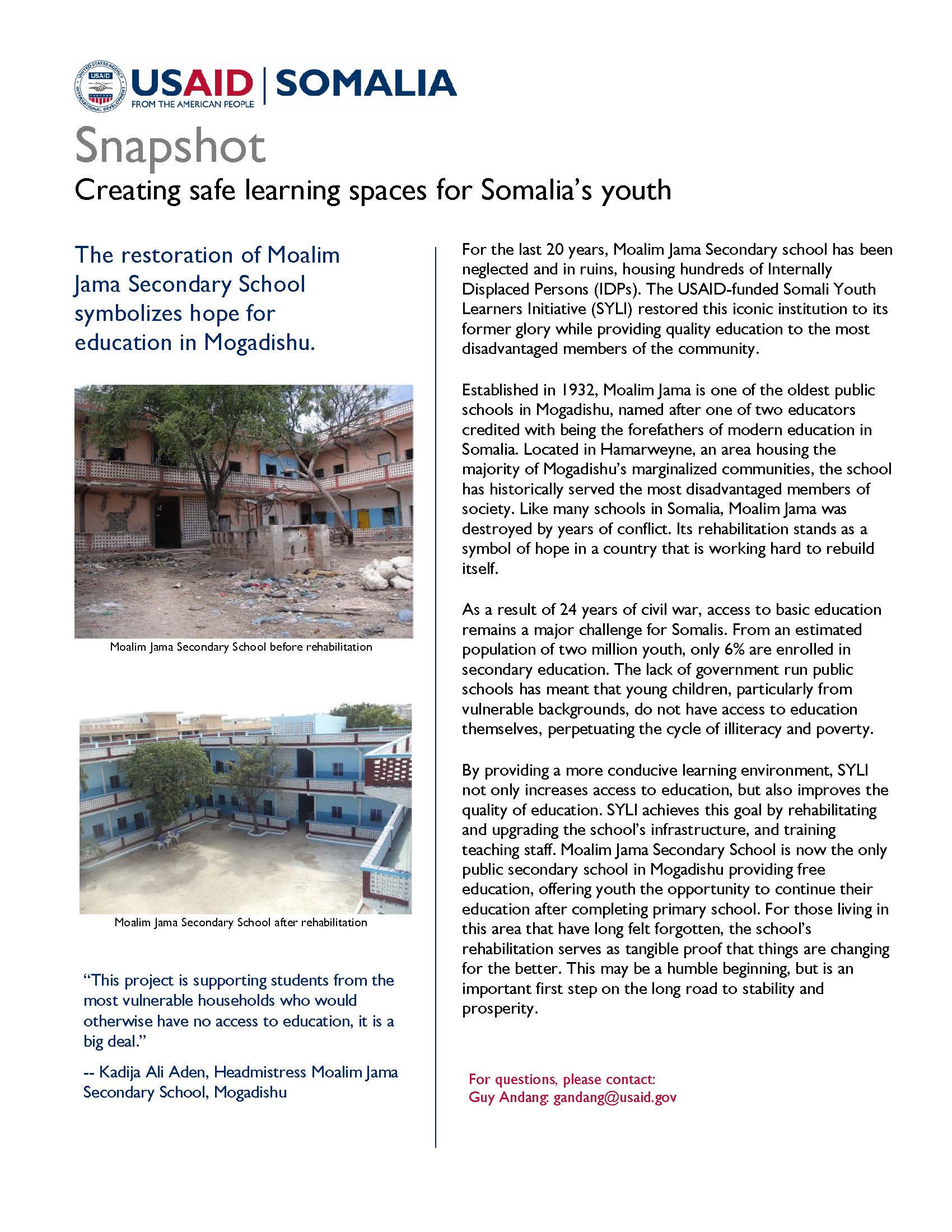Home » Creating safe learning spaces for Somalia’s youth
Speeches Shim
The restoration of Moalim Jama Secondary School symbolizes hope for education in Mogadishu.
“This project is supporting students from the most vulnerable households who would otherwise have no access to education, it is a big deal.” -Kadija Ali Aden, Headmistress Moalim Jama Secondary School, Mogadishu.
For the last 20 years, Moalim Jama Secondary school has been neglected and in ruins, housing hundreds of Internally Displaced Persons (IDPs). The USAID-funded Somali Youth Learners Initiative (SYLI) restored this iconic institution to its former glory while providing quality education to the most disadvantaged members of the community.
Established in 1932, Moalim Jama is one of the oldest public schools in Mogadishu, named after one of two educators credited with being the forefathers of modern education in Somalia. Located in Hamarweyne, an area housing the majority of Mogadishu’s marginalized communities, the school has historically served the most disadvantaged members of society. Like many schools in Somalia, Moalim Jama was destroyed by years of conflict. Its rehabilitation stands as a symbol of hope in a country that is working hard to rebuild itself.
As a result of 24 years of civil war, access to basic education remains a major challenge for Somalis. From an estimated population of two million youth, only 6% are enrolled in secondary education. The lack of government run public schools has meant that young children, particularly from vulnerable backgrounds, do not have access to education themselves, perpetuating the cycle of illiteracy and poverty.
By providing a more conducive learning environment, SYLI not only increases access to education, but also improves the quality of education. SYLI achieves this goal by rehabilitating and upgrading the school’s infrastructure, and training teaching staff. Moalim Jama Secondary School is now the only public secondary school in Mogadishu providing free education, offering youth the opportunity to continue their education after completing primary school. For those living in this area that have long felt forgotten, the school’s rehabilitation serves as tangible proof that things are changing for the better. This may be a humble beginning, but is an important first step on the long road to stability and prosperity.
Issuing Country
Date
Wednesday, October 14, 2015 - 12:30pm


Comment
Make a general inquiry or suggest an improvement.